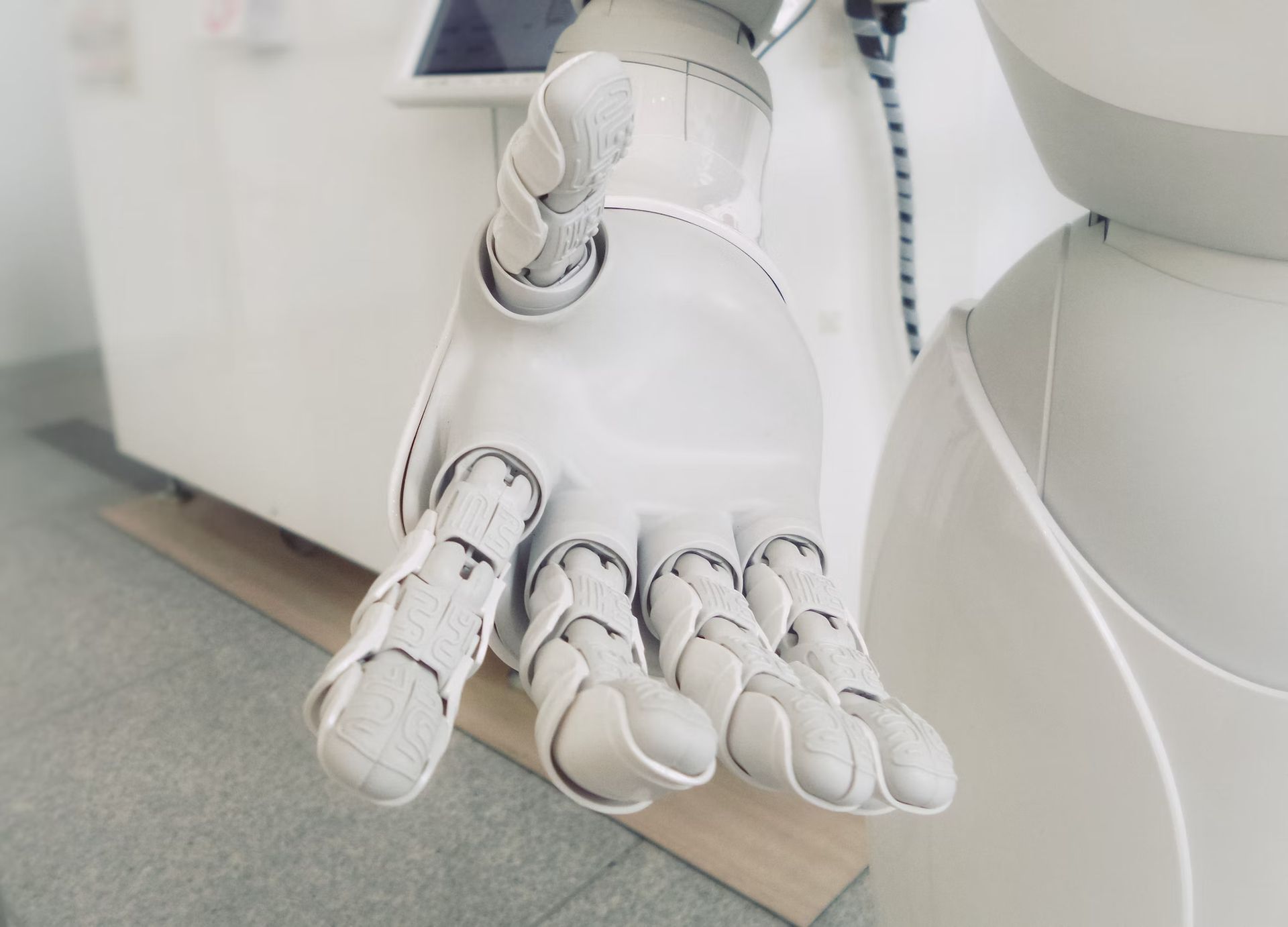Visual artificial intelligence, or Visual AI, is a rapidly growing field in the tech industry that is revolutionizing the way we process and analyze images and video data. From facial recognition and object detection to image classification and content analysis, visual AI is being used in a wide range of applications. In this article, we will explore the capabilities and potential of visual artificial intelligence and how it is being used to improve various industries and everyday life.
What is visual artificial intelligence (Visual AI)?
Before diving into the applications of visual AI, it’s important to understand what it is. At its core, visual artificial intelligence is a branch of artificial intelligence that focuses on the analysis and interpretation of visual data, such as images and videos. It involves the use of machine learning algorithms and deep learning neural networks to identify patterns, classify objects, and extract meaning from visual information.

The field of computer science known as “visual artificial intelligence” teaches robots to interpret visual information the same way humans do. Machines may interpret and perceive the meaning behind images with the aid of visual AI, depending on how the algorithm is trained. This goes beyond simple vision. By comparing them to images they have already “seen,” they may be able to classify things in an image and determine whether each one is a table, a chair, or a lamp, much like a person would. In addition, visual artificial intelligence is the technology behind other features like QR code scanning, facial recognition, and visual search.
Understanding computer vision
Computer vision is a field of artificial intelligence that focuses on enabling computers to understand, interpret, and analyze visual data from the world around them. It involves the use of machine learning algorithms and deep learning neural networks to analyze and interpret images and videos in order to identify patterns, classify objects, and extract meaning from visual information.
Applications of visual artificial intelligence in various industries
One of the most well-known applications of visual AI is facial recognition, which is used in security systems, social media, and even in some retail stores. Other applications include object detection and tracking, which can be used in self-driving cars, security cameras, and surveillance systems. In addition, visual artificial intelligence is being used in image and video classification, which allows for the automatic tagging and organization of media.
Visual artificial intelligence has enabled the development of new technologies for a wide range of industries, including healthcare, security, sports and entertainment, manufacturing, automotive, and retail.
- In healthcare, visual AI is being used for medical imaging analysis, report automation, and to improve diagnosis accuracy.
- In the security and surveillance industry, visual AI is helping with crowd and behavior analysis, people and object tracking, and the identification of disorderly behavior.
- In sports and entertainment, visual artificial intelligence is being used to analyze player performance, create three-dimensional simulations for refereeing, and gauge fan mood and engagement.
- In manufacturing, visual AI is supporting Industry 4.0 through applications such as package inspection, predictive maintenance, robotics, and defect detection and reduction.
- In the automotive industry, visual artificial intelligence is being used for autonomous and semi-autonomous driving, driver behavior analysis, traffic management, and safety and preventive measures such as pedestrian detection.
- Visual AI is also being used in consumer electronics, like Apple’s face detection and augmented reality, as well as on social media platforms like TikTok and Instagram.

How does visual AI impact customer experience?
Visual artificial intelligence (AI) has the potential to greatly impact customer experience in various industries. Here are a few examples of how visual AI can be used to enhance the customer experience:
- Retail: Visual AI can be used in retail to personalize the shopping experience through targeted product recommendations and personalized promotions. It can also be used for inventory management, helping retailers to keep track of stock levels and restock when needed.
- E-commerce: Visual artificial intelligence can be used in e-commerce to improve product search and discovery through image and video classification. It can also be used to provide product recommendations based on customer search history and past purchases.
- Customer service: Visual artificial intelligence can be used in customer service to improve efficiency by automatically identifying and categorizing customer inquiries and routing them to the appropriate agent. It can also be used to analyze customer sentiment through the analysis of facial expressions and body language.
- Marketing: Visual AI can be used in marketing to analyze customer engagement with advertisements and social media posts, helping businesses to better understand what content resonates with their audience. It can also be used to create personalized and targeted marketing campaigns based on customer interests and behavior.
Overall, visual AI has the potential to greatly enhance the customer experience by providing personalized recommendations, improving efficiency and accuracy, and helping businesses to better understand and connect with their customers.
The potential of visual artificial intelligence
The potential of visual AI is vast and constantly expanding. In the healthcare industry, visual AI is being used to analyze medical images and improve diagnostic accuracy. In the retail industry, visual AI is being used to personalize shopping experiences and improve inventory management. In the transportation industry, visual artificial intelligence is being used to improve traffic flow and safety. The possibilities are endless, and it is only a matter of time before visual AI becomes an integral part of our daily lives.
Artificial intelligence is both Yin and Yang
Visual AI is a growing market
In 2021, the market for AI image recognition was valued at USD 2,993.3 million, and it is anticipated that between 2022 and 2027, it will grow at a CAGR of 20.97%, according to Mordor Intelligence. Artificial intelligence (AI) is a branch of technology that mimics the cognitive functions of human cognition. Image recognition has long been seen as one of the artificial intelligence’s most profitable and useful applications. Computer science’s interdisciplinary field of image recognition, which is closely related to computer vision, examines how well a computer can identify and understand the content of images.
Is visual AI going to take over the world?
No. However, “robots” are replacing image processing. When machine learning is mentioned, most people envision a dystopian future in which machines go rogue. Thankfully, the battle between man and the machine is merely a Hollywood invention.
Despite the fact that machines will not soon be in charge, image and vision computing will eventually provide the type of help on which we will all rely. This type of huge data will eventually eliminate uncertainty from marketing decisions. The adoption of machine learning as a service has the ability to eradicate erroneous business decisions by utilizing visual recognition and computer vision resources. But this does not negate the significance of the human brain.

Image analysis and computer vision will make businesses more effective than ever. They will be able to target consumers individually and customize what they see based on the results of visual analysis software. Prepare to take not only your marketing to new heights but also the personalization capabilities of your company. As a business tool, machine learning and visual artificial intelligence will be a total game-changer.
The impact of visual artificial intelligence on social marketing
If you could combine your unique human qualities, such as creativity and cognitive reasoning, with the visual intelligence of computer vision to trigger image comprehension, wouldn’t that provide your social activities a significant boost? Through these uses of machine learning, predictive analytics may eliminate any guesswork from image output. Consequently, it follows that your future plans will consistently produce good results.
Machine learning changed marketing strategies for good and all
The key to successfully navigating this scary new world is to embrace and adapt. The types of photo recognition software that will be powered by computer vision machine learning will totally transform the social marketing industry. Early adopters will emerge victorious: the sooner you adopt, the greater your understanding and the greater your advantage.
- Targeted advertising: Visual AI can be used to analyze customer engagement with advertisements and social media posts, helping businesses to better understand what content resonates with their audience. It can also be used to create personalized and targeted marketing campaigns based on customer interests and behavior.
- Social media analysis: Visual artificial intelligence can be used to analyze social media images and videos to identify trends, sentiments, and patterns that can help businesses understand their customers and target their marketing efforts more effectively.
- Influencer marketing: Visual AI can be used to analyze influencer content and identify those who are most likely to engage with a brand, helping businesses to choose the most effective influencers for their campaigns.
- Customer service: Visual artificial intelligence can be used in customer service on social media to improve efficiency by automatically identifying and categorizing customer inquiries and routing them to the appropriate agent. It can also be used to analyze customer sentiment through the analysis of facial expressions and body language.
Overall, visual AI has the potential to greatly enhance the effectiveness of social marketing by providing personalized recommendations, improving efficiency and accuracy, and helping businesses to better understand and connect with their customers.
Final words
Visual artificial intelligence is a fast-expanding field in the technology sector that is transforming the way we process and analyze images and video data. It employs machine learning methods and deep neural networks to recognize patterns, classify objects, and extract meaning from visual data. Visual AI has numerous applications, such as facial recognition, object identification and tracking, image and video classification, and more.

AI with a visual component has the potential to have a significant impact on numerous industries, such as healthcare, retail, transportation, and manufacturing. It can be used to tailor the shopping experience, boost the accuracy of diagnosis, improve traffic flow and safety, and more. Visual artificial intelligence is also utilized to improve the customer experience by giving personalized recommendations, enhancing speed and accuracy, and assisting businesses in better understanding and connecting with customers.
As the field of visual AI continues to improve, it has the potential to transform how we interact with and comprehend the surrounding world.





